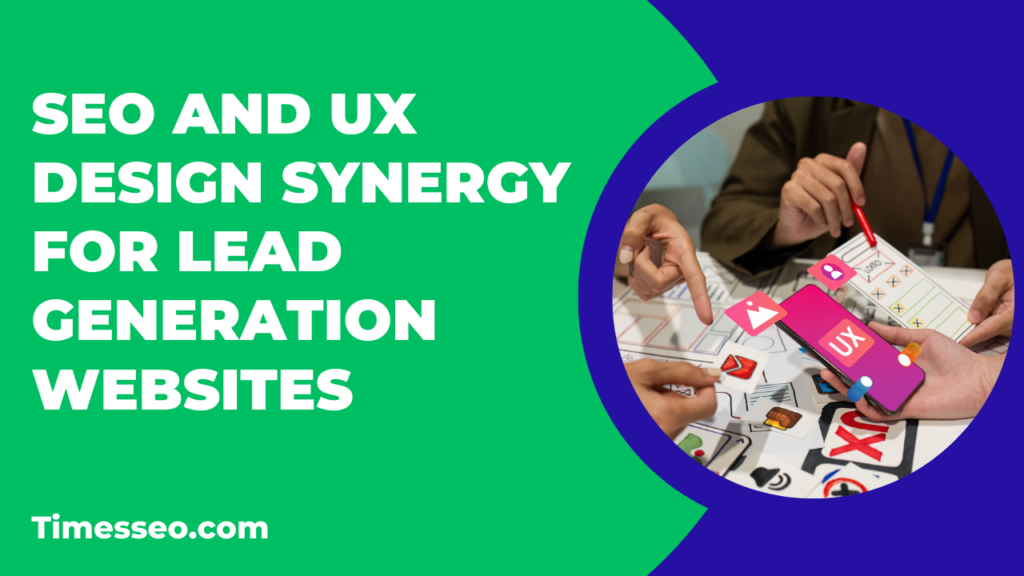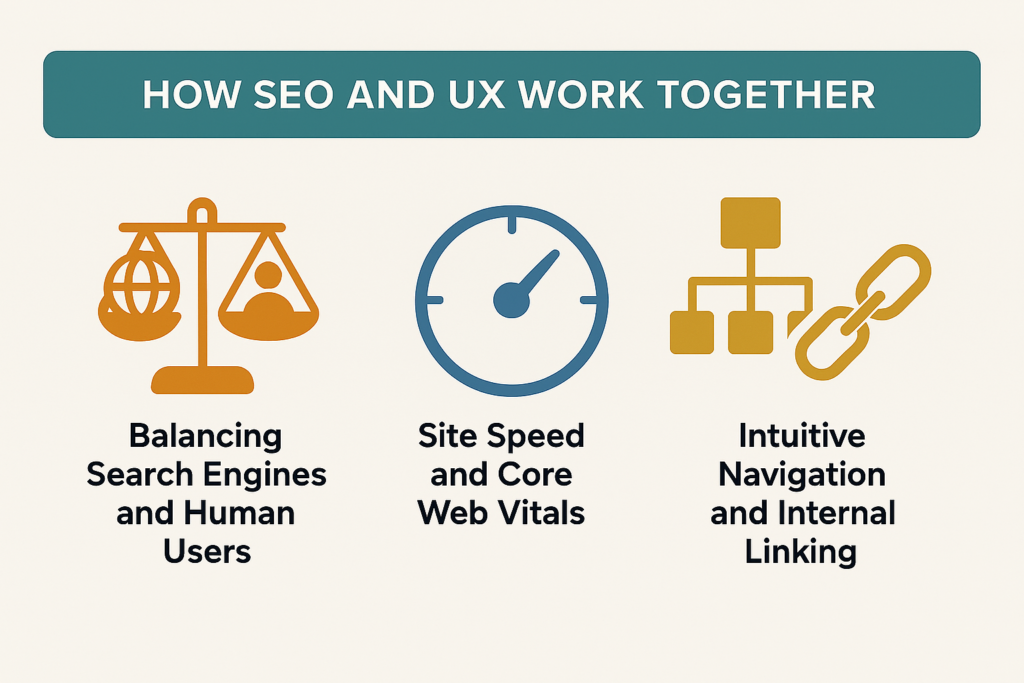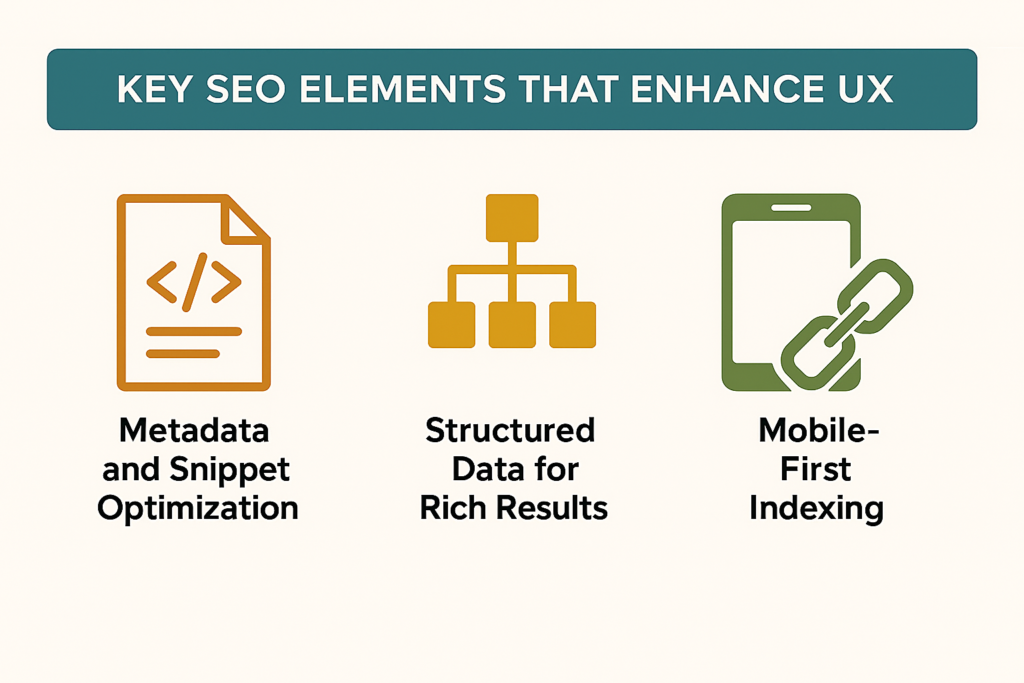
SEO and UX Design Synergy for Lead Generation Websites
Discover how SEO and UX design synergy can transform your website into a powerful lead generation machine. Learn how combining smart SEO strategies with user-friendly design boosts traffic, engagement, and conversions.
Table of Contents
Introduction
When it comes to generating leads online, two buzzwords dominate the conversation—SEO (Search Engine Optimization) and UX (User Experience). SEO gets people through the door, and UX makes sure they stay long enough to convert. Think of SEO as the GPS that brings visitors to your shop, while UX is the store layout that convinces them to buy.
What is SEO?
Optimizing websites to rank higher in search results is known as search engine optimization, or SEO. It’s all about visibility—making sure your site shows up when potential customers search for solutions you offer.
What is UX Design?
User Experience design focuses on how people interact with your website. A well-designed user experience (UX) guarantees that users can find what they’re searching for fast, like the experience, and have enough faith in your brand to act.
Why SEO and UX are Interconnected
SEO without UX is like inviting people to a messy party. They’ll arrive but leave disappointed. UX without SEO is like having a perfectly decorated event that no one knows about. Together, they form a synergy that drives leads.
The Role of SEO in Lead Generation
Driving Organic Traffic
SEO ensures your website is discoverable. More visibility means more clicks, and more clicks mean higher chances of generating leads.
Keywords and Content Optimization
Strategically placed keywords connect your content with user intent. This helps your site rank while offering visitors the exact answers they seek.
On-Page and Technical SEO
From meta tags to page speed and schema markup, technical SEO lays the groundwork for an effective, lead-driven website.
The Role of UX in Lead Generation
Enhancing User Engagement
Good UX ensures users don’t just visit—they interact. Clear layouts, engaging visuals, and easy navigation keep them hooked.
Building Trust Through Design
Professional design signals credibility. If your website looks outdated, visitors are less likely to trust your services.
Mobile Responsiveness and Accessibility
With over half of web traffic coming from mobile, a responsive design isn’t optional—it’s essential for capturing leads.
How SEO and UX Work Together
Balancing Search Engines and Human Users
Google’s algorithms now prioritize user satisfaction. A site that pleases users automatically pleases search engines too.
Site Speed and Core Web Vitals
No one likes waiting. Slow-loading websites not only frustrate users but also drop in rankings.
Intuitive Navigation and Internal Linking
Good navigation ensures users find what they need, while internal linking boosts SEO by spreading authority across pages.
Key UX Elements That Boost SEO
Readability and Content Layout
Breaking content into small paragraphs, using bullet points, and adding visuals enhance both UX and SEO.
Clear Call-to-Actions (CTAs)
Your users need direction. A bold “Get Started” or “Book a Free Demo” button guides them toward conversion.
Visual Hierarchy and Design Simplicity
Cluttered websites confuse users. Clean designs help visitors focus on what matters most—your offers.
Practical Strategies for Lead Generation Websites
Landing Page Optimization
Landing pages should be laser-focused on one goal: conversion. Minimize distractions and emphasize your offer.
Conversion-Focused Content
Case studies, testimonials, and value-packed blogs build trust and push users down the funnel.
A/B Testing for Better Insights
You may find out what works best for your audience by testing new designs, headlines, or calls to action.
Key SEO Elements That Enhance UX
Metadata and Snippet Optimization
Optimized meta descriptions and titles increase click-through rates and set accurate expectations.
Structured Data for Rich Results
Schema markup makes search results visually appealing, improving both click-throughs and user satisfaction.
Mobile-First Indexing
Since Google prioritizes mobile versions, ensuring your mobile UX is seamless boosts both rankings and leads.
Common Mistakes Businesses Make
Keyword Stuffing Without UX Consideration
Cramming keywords hurts readability and turns off visitors, negating the purpose of SEO.
Overloaded Pages With Poor Navigation
Confusing layouts or an excessive number of pop-ups scare away leads rather than attracting them.
Ignoring Mobile User Experience
Neglecting mobile users is a surefire way to lose half your potential leads instantly.
Case Studies of SEO and UX Synergy
Example of an E-commerce Website
An online store increased conversions by 40% after combining fast-loading product pages with clear CTAs and optimized product descriptions.
Example of a SaaS Lead Generation Website
A SaaS company boosted trial sign-ups by redesigning its landing page with simple navigation, better UX writing, and SEO-driven content.
Tools to Improve SEO and UX
SEO Tools (Ahrefs, SEMrush, Google Search Console)
These tools help track keywords, backlinks, and performance, ensuring your SEO strategy stays sharp.
UX Tools (Hotjar, Crazy Egg, Microsoft Clarity)
These platforms show how users interact with your site through heatmaps and session recordings, providing actionable insights.
The Future of SEO and UX Integration
AI-Powered Personalization
AI will allow websites to adapt in real-time, offering visitors customized experiences.
Voice Search and Conversational UX
With smart devices rising, optimizing for voice queries and conversational interfaces is crucial.
Data-Driven Design Decisions
Future UX will heavily rely on analytics to fine-tune layouts, CTAs, and content for maximum conversions.
Conclusion
When SEO and UX design join forces, lead generation websites become unstoppable. SEO attracts traffic, but UX turns them into customers. Together, they create a seamless journey from search to conversion, ensuring long-term success for any business.
Frequently Asked Questions
Because search engines now prioritize user experience, good UX boosts rankings and conversions simultaneously.
Not really. SEO may bring traffic, but without UX, visitors won’t convert into leads.
Focus on landing page optimization, clear CTAs, and consistent A/B testing.
SEMrush, Ahrefs, and Google Search Console for SEO; Hotjar and Microsoft Clarity for UX.
Use keywords naturally in conversational content while keeping readability high.
Table of Contents
Popular Posts
-
 Affordable Technical SEO Audit for Small Business: A Complete Guide26 Jun 2025 Blog
Affordable Technical SEO Audit for Small Business: A Complete Guide26 Jun 2025 Blog -
 How to Get an Affordable Technical SEO Audit for Small Business27 Jun 2025 Blog
How to Get an Affordable Technical SEO Audit for Small Business27 Jun 2025 Blog -
 The Ultimate Local SEO Audit Checklist for Startups28 Jun 2025 Blog
The Ultimate Local SEO Audit Checklist for Startups28 Jun 2025 Blog -
 Local SEO Audit Checklist for Startups: A Beginner’s Guide28 Jun 2025 Blog
Local SEO Audit Checklist for Startups: A Beginner’s Guide28 Jun 2025 Blog -
 Top On-Page SEO Audit Steps for Service Websites Every Business Should Know29 Jun 2025 Blog
Top On-Page SEO Audit Steps for Service Websites Every Business Should Know29 Jun 2025 Blog -
 Technical SEO for WordPress: The Ultimate Beginner’s Guide01 Jul 2025 Blog
Technical SEO for WordPress: The Ultimate Beginner’s Guide01 Jul 2025 Blog -
 The Impact of On-Page SEO Audit Steps for Service Websites on UX01 Jul 2025 Blog
The Impact of On-Page SEO Audit Steps for Service Websites on UX01 Jul 2025 Blog -
 Technical Mobile SEO Audit Tips for Developers02 Jul 2025 Blog
Technical Mobile SEO Audit Tips for Developers02 Jul 2025 Blog -
 Complete SEO Backlink Audit Guide for Better Google Rankings03 Jul 2025 Blog
Complete SEO Backlink Audit Guide for Better Google Rankings03 Jul 2025 Blog -
 Boost Your Rankings with Technical SEO for WordPress01 Jul 2025 Blog
Boost Your Rankings with Technical SEO for WordPress01 Jul 2025 Blog







